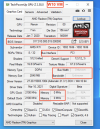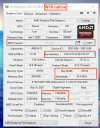Hello!
I recently built a SFF system with the newer Ryzen 7 "Renoir" 4750G APU and ASRock X300 case/motherboard combo. I'm hoping to set it up with PVE (v6.3-1) with several guests, and would like to pass through its integrated GPU (Radeon RX Vega-based) to a Windows 10 VM.
According to this forum post, I will likely have to first enable the experimental Renoir APU drivers in the kernel upon boot, since they're only standard in kernel 5.5, using the command: amdgpu.exp_hw_support=1
Then I am thinking to find my iGPU bus & function numbers via the lspci command, to then run lspci -nks <bus/function>, so I can get the kernel module name, which I would then add to the /etc/modprobe.d/pve-blacklist.conf file. I guess I could even add the module name to the modprobe.blacklist=... kernel parameter in GRUB as well.
This is where I'm at a loss of what I'd need to do next to next to actually assign the iGPU to the VM.
Any tips on what the process may look like once the unit arrives, or if this is a lost cause? Has anyone been successful with assigning an AMD APU integrated GPU to a (ideally, Windows 10) guest VM?
Cheers.
I recently built a SFF system with the newer Ryzen 7 "Renoir" 4750G APU and ASRock X300 case/motherboard combo. I'm hoping to set it up with PVE (v6.3-1) with several guests, and would like to pass through its integrated GPU (Radeon RX Vega-based) to a Windows 10 VM.
According to this forum post, I will likely have to first enable the experimental Renoir APU drivers in the kernel upon boot, since they're only standard in kernel 5.5, using the command: amdgpu.exp_hw_support=1
Then I am thinking to find my iGPU bus & function numbers via the lspci command, to then run lspci -nks <bus/function>, so I can get the kernel module name, which I would then add to the /etc/modprobe.d/pve-blacklist.conf file. I guess I could even add the module name to the modprobe.blacklist=... kernel parameter in GRUB as well.
This is where I'm at a loss of what I'd need to do next to next to actually assign the iGPU to the VM.
Any tips on what the process may look like once the unit arrives, or if this is a lost cause? Has anyone been successful with assigning an AMD APU integrated GPU to a (ideally, Windows 10) guest VM?
Cheers.
Last edited:




